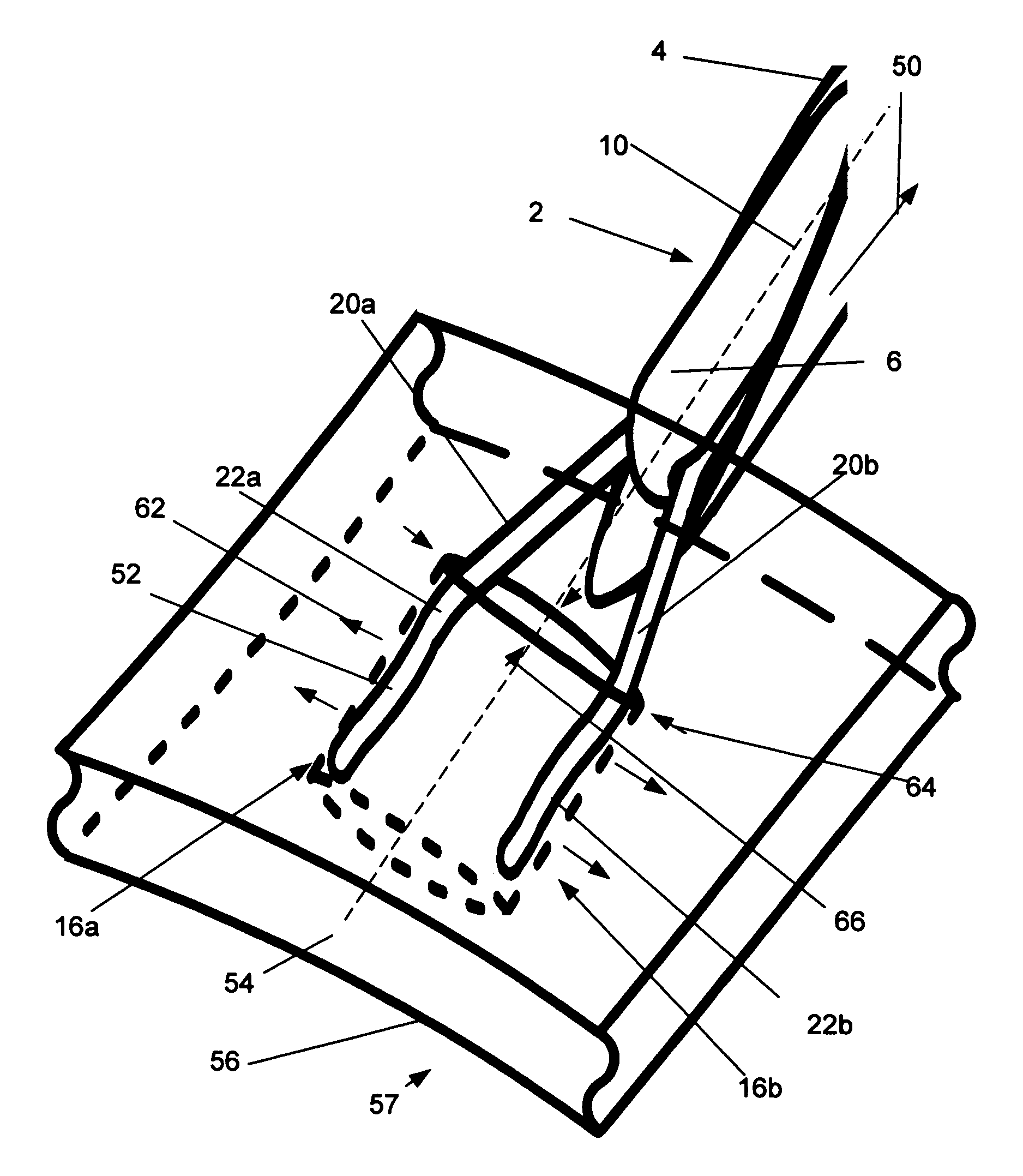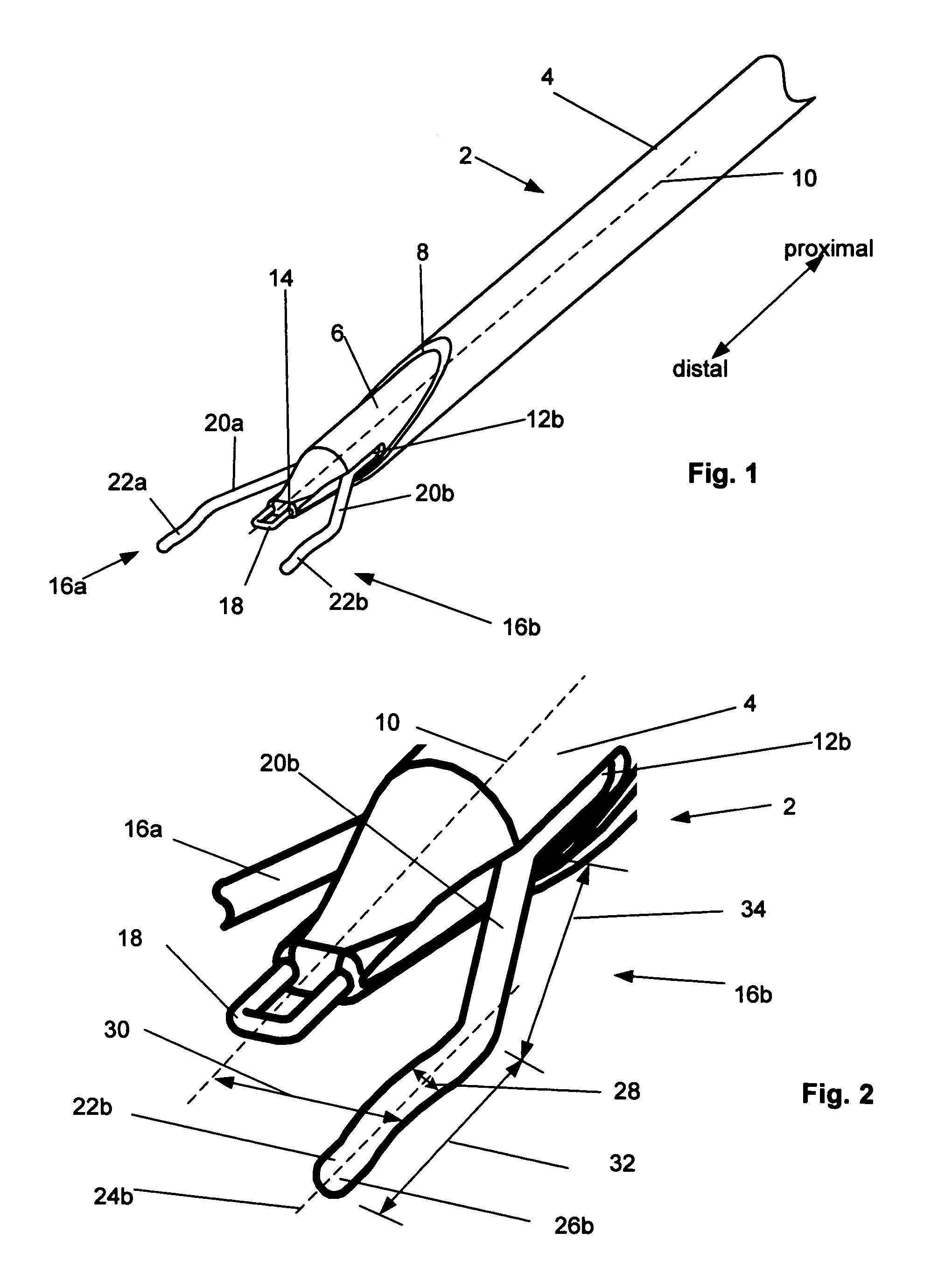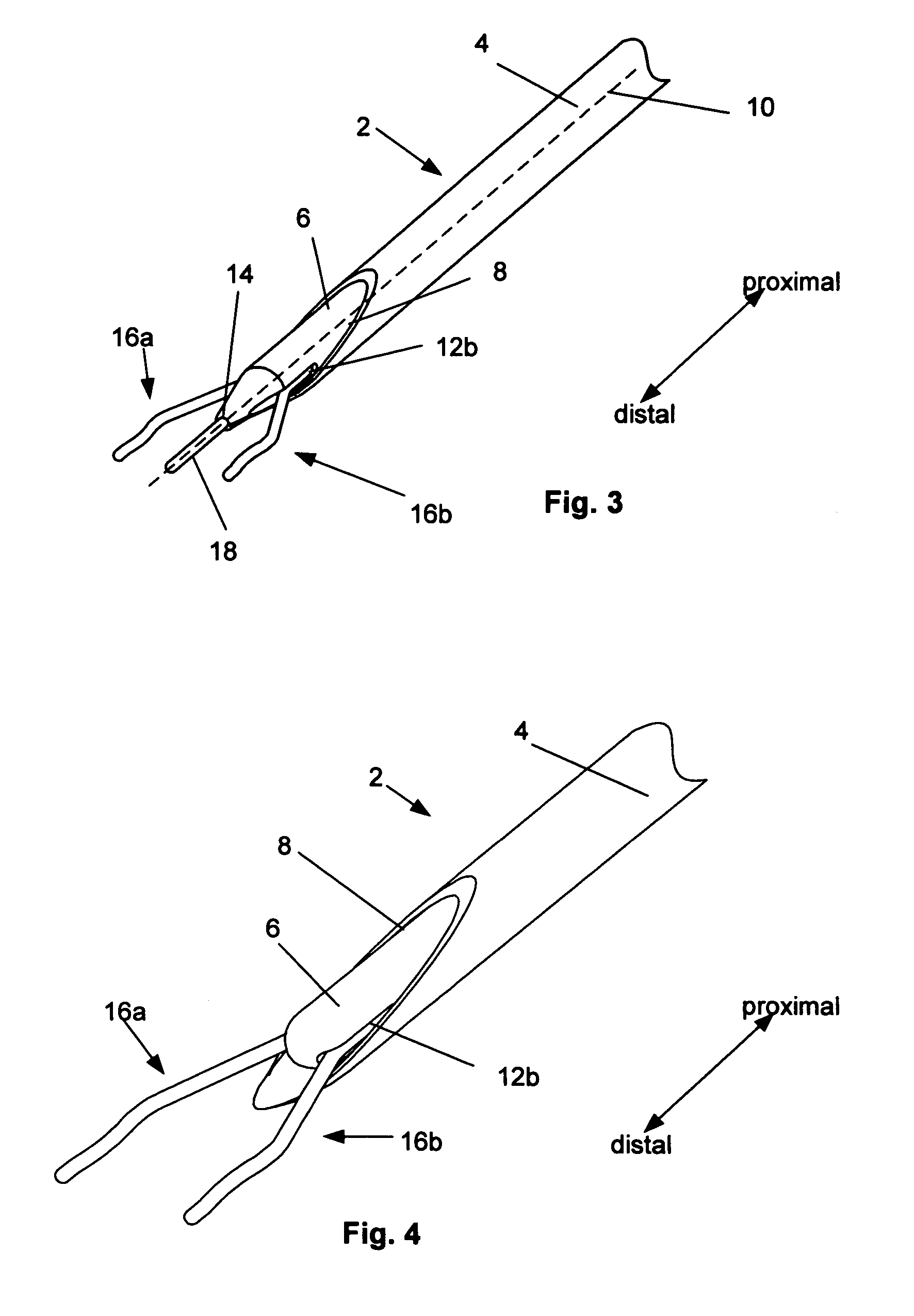Biological tissue closure device and method
a technology of biological tissue and closure device, which is applied in the field of closing openings, can solve the problems of total occlusion of blood vessels, time-consuming methods, and discomfort of procedures for patients
- Summary
- Abstract
- Description
- Claims
- Application Information
AI Technical Summary
Benefits of technology
Problems solved by technology
Method used
Image
Examples
Embodiment Construction
[0033]FIG. 1 illustrates in an extended (i.e., expanded) configuration, a closure device 2 for biological tissue closure, for example to create hemostasis across an arteriotomy. FIG. 2 illustrates a close-up of the distal end of the closure device of FIG. 1.
[0034]The closure device 2 can have a delivery guide 4. The delivery guide 4 can be a tubular member, such as a catheter or sheath on the outer radial side of the closure device 2. The delivery guide 4 can be hollow. In one configuration, the delivery guide 4 can be on the proximal end of the closure device 2. In another configuration, the delivery guide 4 can be the entire length of the closure device 2. The delivery guide 4 can have a low-friction inner surface. The delivery guide 4 can be configured to receive an inner member 6. The delivery guide 4 can have a distal port 8 at the distal end of the delivery guide 4.
[0035]The delivery guide 4 can have a proximally-located handle (not shown). The handle can facilitate manipulati...
PUM
 Login to View More
Login to View More Abstract
Description
Claims
Application Information
 Login to View More
Login to View More - R&D
- Intellectual Property
- Life Sciences
- Materials
- Tech Scout
- Unparalleled Data Quality
- Higher Quality Content
- 60% Fewer Hallucinations
Browse by: Latest US Patents, China's latest patents, Technical Efficacy Thesaurus, Application Domain, Technology Topic, Popular Technical Reports.
© 2025 PatSnap. All rights reserved.Legal|Privacy policy|Modern Slavery Act Transparency Statement|Sitemap|About US| Contact US: help@patsnap.com



